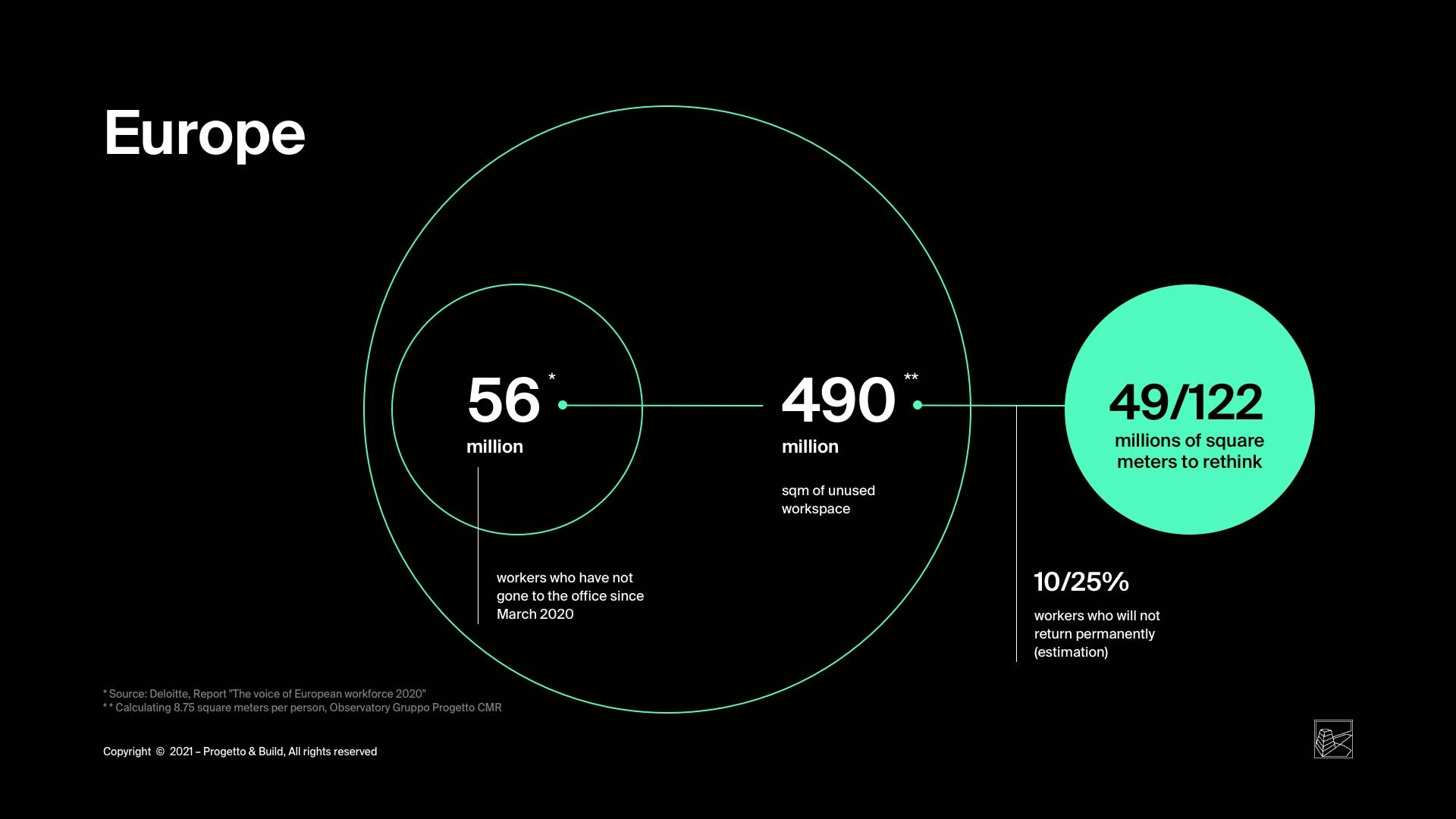A whole year has gone by since the SARS-COV-2 virus made havoc on our normality. One of the most visible effects has been the upheaval in each of us's relationship with workspaces. Offices and stores deserted or inhabited by just a few people at a time, private homes transformed into offices, companies and cities finding themselves dealing with a whole new complexity, perhaps glimpsed among the reflections of a possible future, and now suddenly become urgent.
Let's be honest; not everything is a consequence of Covid. All in all, it is convenient to blame it for all this uncertainty and confusion: it allows us to postpone the reckoning with a reality that was already in transformation, only more slowly. Our relationship with the places where we practice our profession was already changing; we as people had already changed our expectations of the offices we inhabit. The technology we use every day facilitated this change in perspective.
We all like welcoming offices that host other functions and services besides commercial value production - sociability, entertainment, and spaces to develop personal inclinations. Honestly, the rhythms and modes of contemporary work lead to a collapse between personal and professional spheres that mean workplaces often coincide with people's living space. Technology, on the other hand - and this is a consideration devoid of value judgments, mind you - makes us all interconnected, close in intentions, even if not necessarily physically close.
All these considerations make it highly urgent to think about workspaces: after all, their future is not in ten or twenty years, but hopefully, next year, when this new normal we talk about less and less will no longer be just a disillusion, but eventually a reality.
For this reason, on the occasion of the Milano Digital Week, we organized a debate around this theme, gathering experts in the field of design - designers and architects - but also technologists, public administrators and representatives of companies, subjects who live the change on their skin and shape it with their decisions. The full recording of the event is available at the bottom of this article.













